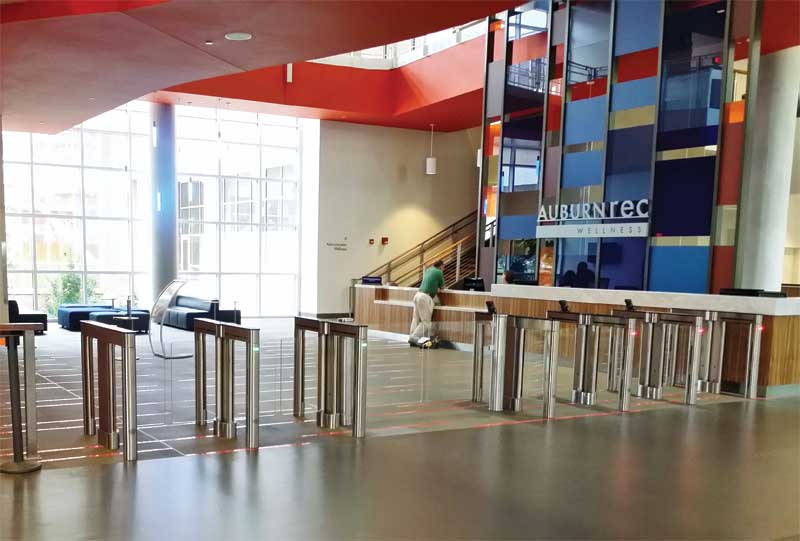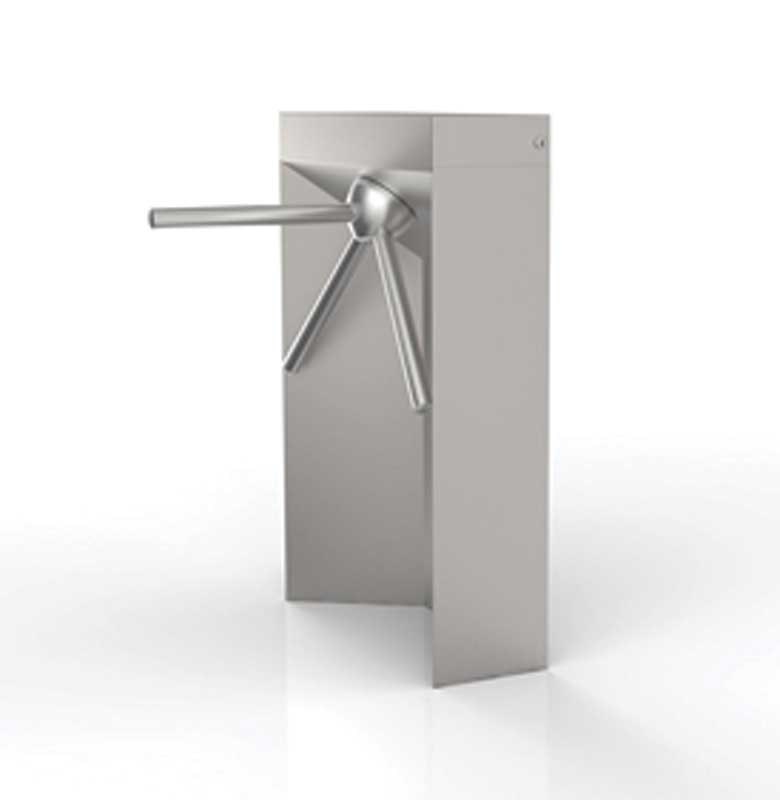
by Nick Simon
One of the best options for improving the physical security of buildings and facilities is the use of turnstiles to control employee and visitor access. Besides improved security, turnstiles offer many benefits over the use of doors, including effective integration with the facility’s access control system and increased operational flexibility.
Generally, some variety of door is the first point of entry to a facility. To control access and thus provide extra security, card readers and electric locks are commonly added. While readers and locks require a valid credential to gain access, they are unable to control how long the door is open or how many people enter through it once it is open. Unauthorized individuals can follow authorized personnel through an open door, resulting in a common security issue referred to as ‘tailgating.’ Further, a door cannot isolate the direction of authorized passage. For example, if a door is activated for an exit, it will not prevent an unauthorized user from entering through the open door.
Unlike doors, turnstiles can both limit the number of people entering or exiting on a valid credential and control the direction of passage. Some also have enhanced detection features, which include identifying loitering in the passage area and forced entry attempts.
Access control integration
Turnstiles easily integrate with a building’s access control system, as well as other security equipment such as cameras, to ensure only authorized individuals enter the facility.
In order to gain entry through a turnstile, a user must first present a valid credential. Then, the access control system signals the turnstile to allow a single passage. After the user passes through the turnstile, it immediately communicates back to the access control system the passage has occurred. The integration between the access control system and turnstiles instantaneously provides useful information, such as the specific identity, time, and location of each person who entered or exited the facility. This allows security personnel
to track system users, pinpoint alarm locations, and identify potential security threats.

If an invalid credential is presented, the access control system signals the turnstile to notify the user of a rejected credential via illumination of a red light or an audio sound. In the event of an alarm condition such as a tailgating or forced passage attempt, the turnstile can provide an output to the access control system. Simultaneous outputs can also be provided to activate nearby cameras or lock down secondary doors.
Operational flexibility
Turnstiles enhance facility operations by streamlining the entry process, allowing guard staff to be more effective with their time. Additionally, turnstiles are able to accommodate a wide array of credential readers, including:
- barcode;
- magnetic stripe;
- proximity (radio-frequency identification [RFID]/near-field communication [NFC]); and
- biometric.
Turnstiles with integrated readers allow users to present credentials to gain entry. The self-validation function lessens the burden placed on receptionists and security guards, allowing them to focus on their primary job functions instead
of constantly verifying credentials.
Turnstiles can be configured to control a single direction or function
bi-directionally. Passage modes are independent for each direction and include free passage, controlled passage, or locked modes. Allowing entry without authorization, ‘free passage’ is often employed when users are not required to card out to exit. Controlled passage, on the other hand, requires a valid credential before entry or exit will be permitted. In locked-down mode, the turnstile remains locked and prohibits passage, even when presented with a valid credential.
Security personnel can schedule specific modes to activate at certain times of the day to meet operational requirements. For example, specific turnstiles may be set as entry-only during morning hours when employees are arriving to work and then switch to exit-only in the afternoon when employees are leaving. Turnstiles can also be locked down at night and on weekends when the facility is closed. Turnstile modes are typically set through the access control system or, for more advanced turnstiles, controlled remotely using an application on the facility’s network.





nice article, thank you broe
Even though turnstiles have many benefits it also has some disadvantages like tailgating and limited access.
Nice information regarding security systems